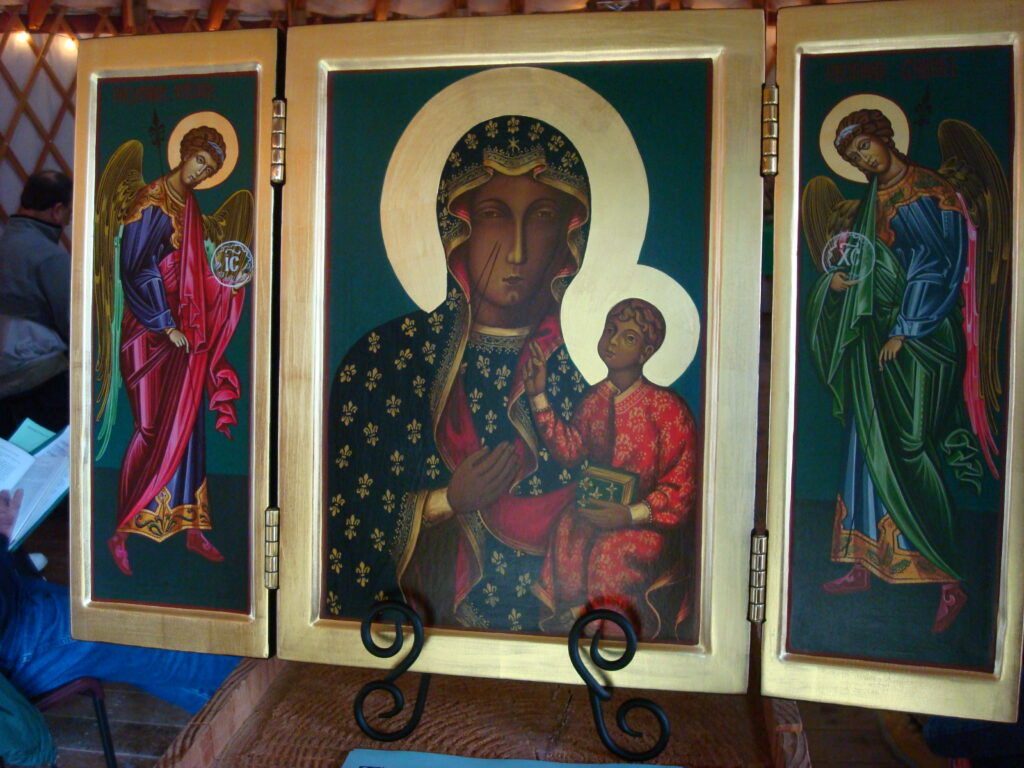Homespun Homily: Tulips and the Resurrection – Easter 2023
By Lori Fontana
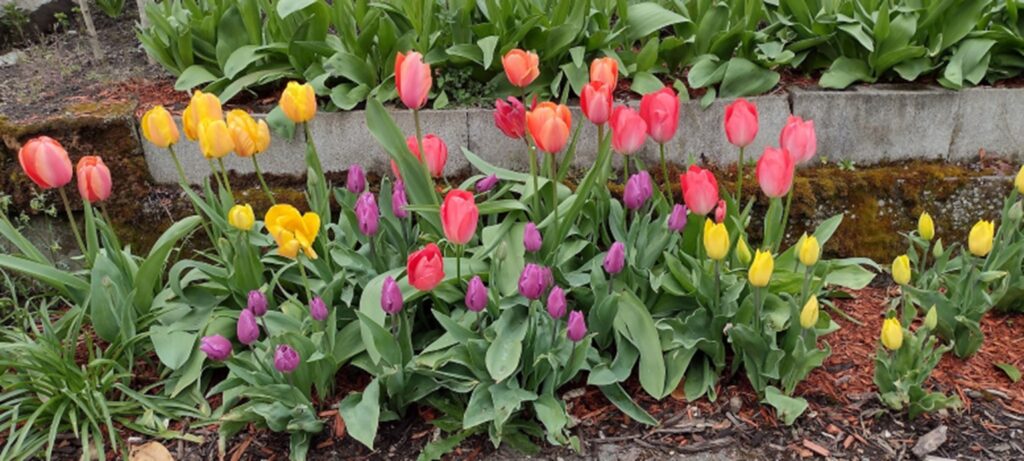
You know about tulips. I think they are my favorite flower. Each fall, around early September, I buy or pull out of the storage shed the oddly shaped, gnarled orbs we call bulbs. They look dry and lifeless, with loose peelings of brown skin and sometimes a tuft of short, dark root tendrils. I loosen the soil in our garden, dig little circular tunnels straight down, and, one-by-one, place the bulbs inside. As I smooth dirt over each bulb, I wonder – what will this one look like? What color will it be? Because, usually, I have no idea which bulb is which, which is red or pink, white or purple – it will be a great surprise come the spring.
Then, with great hope, I wait…and wait…and wait.
The bulbs are out of sight, hidden in the earth. Through the fall and winter, they are covered over with fallen leaves, puddles of rain, a smattering of snow.
The winter months are so dark, so gray, so wet. It’s hard to remember the promise of colorful blooms. Our Seattle spring comes very slowly. We might have one sunny day in January; maybe one more in February. By March the sun might shine once a week. Yet the air is still damp and icy cold. But the tulips respond to the slightest touch of sunshine warmth. Forgotten over the long winter, each bulb now stretches the tiny tip of a green leaf through the soil and into the weak sunlight of early spring.
At first, I hardly notice that the garden is coming alive. But then the tip of the leaf pushes further up; one leaf, then two and three. And nestled between them is the flower stem with the tightly closed bloom perched on top. The tulips grow at their own pace; and they keep their blooms securely under wraps until they reach full height. Only then do the buds begin to unfurl, showing the glorious colors of their delicate petals, some rounded, some pointed, some ruffled or scalloped. The petals are bright and luminous, catching the breeze and waving and bowing in the sunlight. What a wonderful spring surprise!
It’s very fitting that we observe Holy Week in the spring. As we approach Holy Week – the Passion, Death, and Resurrection of Jesus – I think tulips are a gentle reminder of the desolation and the glory of this painful, wonderful, awesome mystery. On the cross, Jesus gives his final gift. Through his passion and death, Jesus pours out his life in great love for us. At the end, he has nothing left to give – he’s given us his all. Taken down from the cross, Jesus is placed in the tomb, his tortured body hidden away in darkness, out of sight. His followers are left alone, bereft and drained of hope.
Symbolically, for Jesus’ followers, it’s winter in their hearts and souls: Jesus, whom the disciples believed was the Messiah, their friend and teacher whom they loved, is now lifeless, gone from their sight. All is hopelessness. The disciples cower behind closed doors, filled with doubt and fear. Quickly forgotten is the Jesus who turned water into wine, who multiplied loaves and fishes, who healed the blind and the lame, comforted the mourning, gathered the children in his arms, and raised Lazarus from the dead.
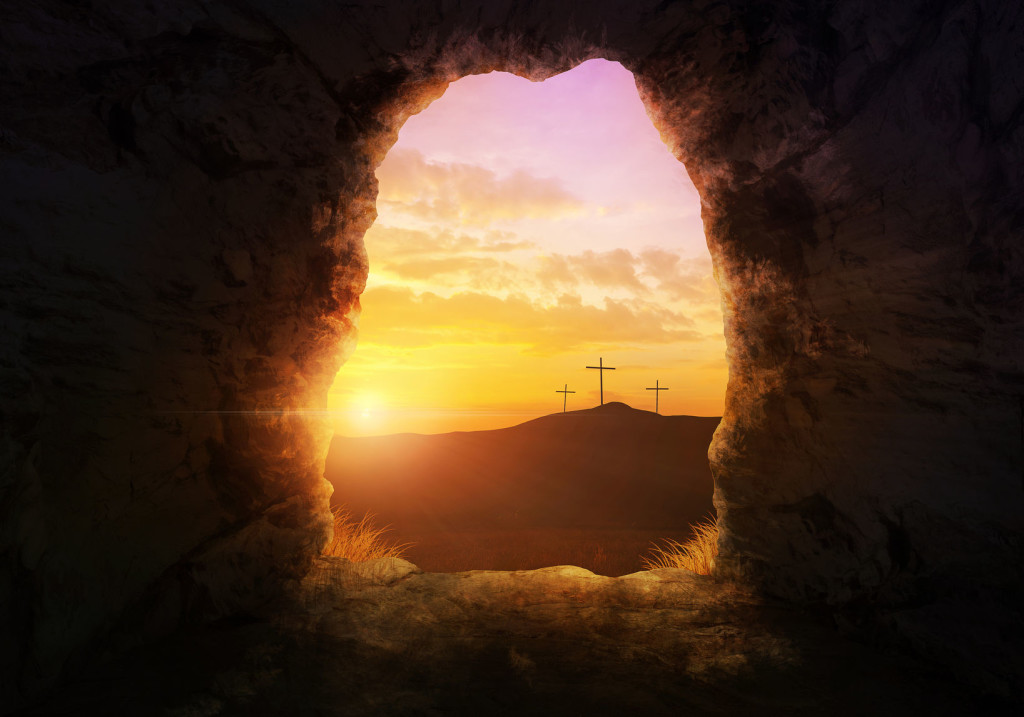
Then comes Sunday morning. Mary Magdalen and her companions come to the garden, intending to anoint Jesus’ body. The first rays of the rising sun warm their faces as they approach the tomb where Jesus lies. And then, wonder of wonders! “An angel of the Lord…[had] rolled back the stone.” To the women, the angel says, “He is not here, for he has been raised just s he said.” Matthew 28:2, 5-6
Jesus appears to Mary Magdalen and others of his disciples. Over the next several weeks, Jesus appears to many believers and doubters alike. With the resurrection, many renew their faith in Jesus; many others come to believe. What was lost is found; what was hidden is now seen; what was dead is now alive!
In a very humble way, the tulip mirrors the Resurrection. The tulip bulb appears dead. It’s hidden away in the cold earth. In fact, it must lie buried in winter’s cold so that it can “rise” to new life in the spring. A small miracle: from the bulb which, when planted, appears to be wrapped in a drab burial cloth, bursts forth a magnificent flower rich with color and life.
From death to life! The miracle of the Resurrection. As we travel with Jesus through Palm Sunday to the Last Supper of Holy Thursday, to the Agony in the Garden, through Jesus’ trial and torture, his Way of the Cross, his crucifixion on Calvary’s hill, his death and burial – cling to sure hope. Jesus’ burial in the dark tomb is not the final word. Easter morn will dawn, and with it the glory and colors of NEW LIFE. When you see tulips blooming in gardens and on Easter dinner tables, remember that death is not the end. For we who believe, it is the path to new life. What appears dead has new life in the promise of Jesus.
The lesson of the tulip is echoed in a line by Martin Luther, the great Protestant Reformer:
“Our Lord has written the promise of resurrection, not in books alone, but in every leaf in springtime.”
Happy Easter!

Young people, will you succeed as spouses and parents? (Part II)
(An imaginary conversation between Robert and young adults in college, some churchgoers and some not. In Part I, young people talked about the impact of being raised in divorced families and expressed their desire to avoid divorce in their futures.)
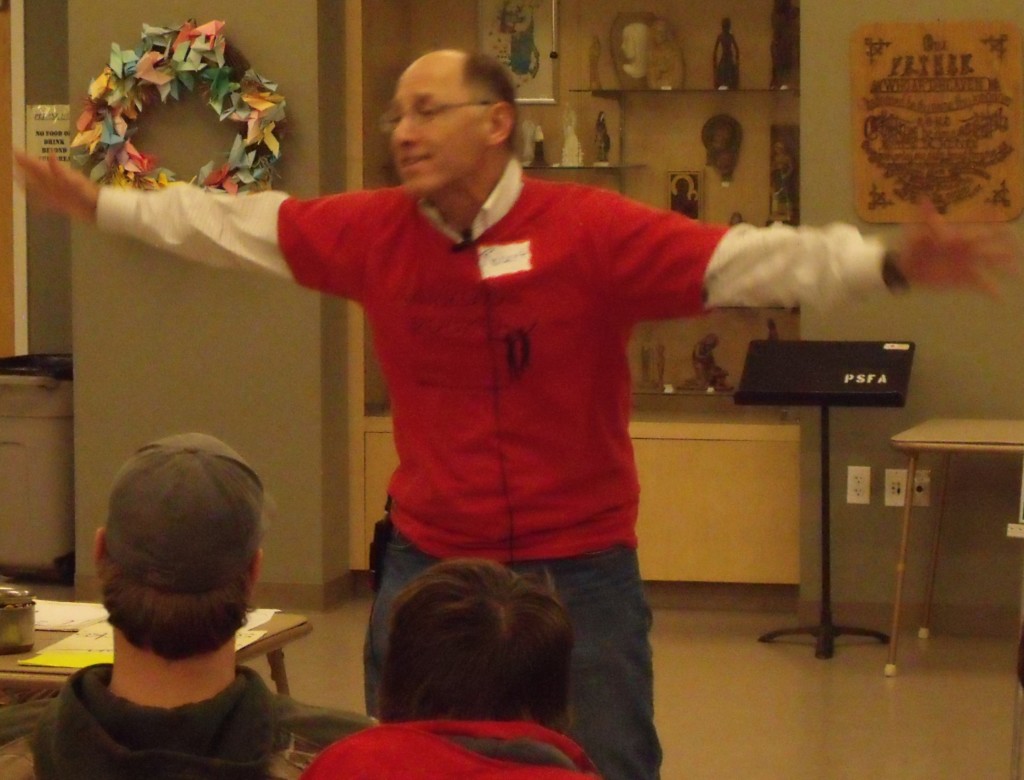
Robert It’s not too late for you to prepare now to be successful later as spouses and parents. Think about it. What preparations can you do now to help you succeed later in love/marriage and as a parent?
YP1 Don’t marry a jerk! (Others yell out, “Yeah, don’t hook up with an a_ _ h_ _ _ !”)
R Amen to that! But keep in mind that your moms and dads did not think the other was a jerk at the time they married. Maybe there were signs of problems that lay ahead that each ignored because they wanted so much to marry and did not want to have an argument.
YP1 My mom told me that she swore as a teenager that she would never marry a drunk like her own dad. But she did. She thought a baby and marriage would change Dad. It didn’t. She did everything to try to get him to sober up and be a good dad. He was a good dad when he was sober.
R Thank you for saying that. There’s so much pain in your story. It’s sad but true: men and women raised in families who struggle with drug or alcohol addiction often marry a partner who has some sort of substance dependency. If your boyfriend or girlfriend has a regular pattern of getting drunk or stoned now, marriage and parenthood are not likely to change that. The same is true if he or she treats you really badly when there’s a conflict – name-calling or a prolonged “silent treatment,” throwing things, etc. Moving in together, buying a house together, having a baby together and/or getting married will not usually change that behavior.
YP2 My girlfriend wasn’t a jerk; we just couldn’t get along after moving in together. She didn’t like how I stayed up late gaming; I didn’t like how messy she was. She didn’t like my work hours, and I didn’t like how she wouldn’t talk to me when she was mad. So, we broke up.
R Too bad you broke up.
YP2 What? How can you say that?
R Well, from what you told me, the two of you were learning some important things about each other. You were learning how different each was from the other. You just didn’t learn how to accommodate your differences so that the relationship could survive and thrive.
YP2 We were like two people playing tug-of-war.

R Many of your parents who divorced probably started growing apart for the same reasons. They were bumping into each other’s differences, which resulted in conflicts that they never learned to resolve. They didn’t have the tools to work through their differences. You see, you and your girlfriend had an unsolvable problem, as does every couple in the universe. You are not your girlfriend, and your girlfriend is not you!
It’s been documented by exhaustive research that 70% of all conflict between a couple has little to do with big moral issues such as, “Are we going to cheat on our income taxes this year?” or, “Shall we trash the neighbors’ yard?” Most conflict between two people in love comes from their having different histories and life experiences, different emotional temperaments and communication skills, and different expectations of the relationship. And when they bump into these differences, they don’t know how to negotiate them and find some common ground so that the relationship wins.
YP3 What do you mean by “the relationship wins?” Doing whatever my partner wants so that we don’t have a conflict? Dad tried that. “Happy wife, happy life,” he would say. That worked for a while. Then a little thing would set him off, and he would explode with anger.
R Great question. Denying my needs in this relationship and giving in to my partner’s is a recipe for my feeling hurt, unimportant, and resentful. For “the relationship to win,” we both have to make our emotional needs clear on any particular issue and work for common ground where we both get something we need. In my own marriage, when my wife and I each learned to say, “I won’t win at your expense, and I won’t let you win at my expense,” we began learning to resolve our differences. The relationship “won” because we were learning to trust that we had each other’s best interests at heart.
Now this may seem a bit odd to you all, but what we really learned was to seek “unity” in all things. By seeking “unity in all things,” in how we spent money, with cooking, work commitments, time together and time apart, we were able to resolve one potential conflict after another. Unity doesn’t mean “uniformity.” I will never be my wife, and she will never be me. After 45 years of marriage, we are still night and day different in many aspects of our personalities.
YP4 That sounds beautiful…and impossible.
R It is beautiful, and it is hard…and it is possible! Think about this. You are training right now to succeed in a particular career or area of work. You are not learning everything you need to know to succeed in these occupations, but you are laying a foundation on which you can build as you grow into your career. Can you also intentionally practice skills now which will help you succeed later in marriage? Since time is almost up, let me give you a list of skills you can develop now to succeed later as spouses and parents.

- Learn to grow in self-awareness. Take time each day learn about yourself, what you like and dislike, and why. Journal your thoughts. Pay attention especially to times when you have been hurt by another or when you have reacted strongly to another. Examine why you responded the way you did.
- Learn to listen to others for understanding. Work at listening without the motives of winning an argument, rebutting the speaker, or proving the speaker wrong. Especially with others with whom you may not have much in common, practice listening for the purpose of understanding. Remember, you can understand someone even if you don’t agree with what he / she is saying.
- Learn to validate another’s emotions. This is part of listening. Look for the emotions/ feelings behind the words. This is important because emotions drive behavior. By naming the feelings that are being expressed, the listener can convey care and a deeper understanding of the speaker.
- Learn to grow in friendship (especially with a romantic partner). Learn to share your likes and dislikes with trusted friends; and listen to their likes and dislikes. Identify how you are similar and dissimilar. Practice finding common ground. (By the way, friendship between spouses is one of the key ingredients for a lifelong successful relationship.)
- Learn to resolve conflict by seeking common ground and unity with another person.
- Learn to forgive and ask for forgiveness. There are no perfect relationships. We do hurt one another despite our best intentions. Sometimes forgiveness is what’s needed to heal and move forward in a relationship.
Young people, will you succeed as spouses and parents? (Part I)

By Robert Fontana (An imaginary conversation between Robert and young adults in college, some church-goers and some not.)
Rob Here’s my question for you. Gay or Straight, will you succeed as spouses and parents whenever that may be?
YP 1 (young person) What? That’s a crazy question. I’m not even thinking about being married or becoming a parent. Now, living with my love interest? Maybe.
(All the other YPs join in with “Same here!” and “Me too!” and “I just want to have some fun.”)
Rob Oh, I hear what you’re saying, but let me ask you this. How many of you see marriage and family in your future?
(Most hands go up.)
Rob Great. How many of you who raised your hand hope to get divorced?
(There’s a pause…then a dozen or so hands go up; young people are laughing.)
Rob Oh…of course, a few of you are planning on getting divorced, but the majority of you, should you marry, are expecting that your marriages will go the distance, “till death do us part.”
But the truth is, if current patterns hold up, many of you will get divorced: between 40-50% of non-church marriages end in divorce. This rate is going down especially among the middle- and upper middle-class couples, while it is going way up for couples raised in poverty. For couples who participate in church, about 28% of Catholic marriages and 33% of Protestant marriages end in divorce. Not a very good percentage, but better that the general population.
YP 2 My parents divorced when I was 13, and it totally sucked because they kept on fighting. I was caught in the middle and couldn’t wait until I could get out of both homes and be on my own. What’s sad is that now both my parents express regret that they didn’t get the help they needed to work things out.
YP 3 My parents never married and broke up before I was born. But they were nice about it. I was raised in two separate homes all my life. I don’t want that for my kids, but it wasn’t that bad.
YP 4 My dad was a raging alcoholic. When he wasn’t drunk, he was kind and funny. But once the drinking started, which was usually every weekend, our home was a nightmare. Mom and Dad fought like cats and dogs until my dad broke my mom’s nose one night. That was it. Mom left, took us with her, and we never looked back.
YP5 My parents just could not live together. When the divorce was over, they stopped fighting. Each remarried. It wasn’t bad. I like my stepparents, but I don’t want divorce for my kids.
Rob My goodness. What pain all of you went through! Thank you for sharing your stories. They are all so different, and yet they have the common thread of parents who did not succeed in marriage nor provide a stable homelife for you.

Will you be different?
(Pause.)
YP 6 I’m never going to get married. I’ll live with someone who I think can be an honest and loving partner, but if things get weird, I’m out. And no babies. I don’t want any kids to have to go through what I went through when my parents divorced.
Rob That makes sense. Your own experiences tell you that being locked in a marriage keeps a person trapped when things go bad. You want the flexibility to leave when you need to. Having children is not a desirable option.
(Speaking to all present) How about this: describe a successful marriage.
YP 7 My mom and dad have been married…ah…well since before I was born. They are each other’s best friend. They have a lot of fun together. Church is important to them which gives them common values and friends. They do argue but there is never any fighting, no name calling and no hitting. And, as far as I can tell, they quickly make up.
YP 8 My parents had a difficult marriage until my dad went to AA and sobered up. Afterwards, they made a Marriage Encounter weekend, and it turned their lives upside down and ours too. Before sobering up and Marriage Encounter Mom was like a single mom. Afterwards dad has shown up for everything. We would eat dinner as a family, he came to our games, and we had a weekly family night that was alcohol-free and fun. Mom and Dad seem to love and trust each other. Thank God.
Rob Great stories. Listen to what you are saying. What are the elements of a successful marriage? You’ve named friendship between couples, trust, sobriety, common values, spirituality, friends who share your values, and being able to argue, without escalating to fighting, and then reconnecting.
There is no reason that you cannot have a successful marriage and family life. But you must prepare now if you want to succeed later.
You know this is true with other areas of your life. How many of you are preparing now to be successful later in a specific career? (All hands go up!)
How many of you who played high school sports started in sports as a five- or six-year-old?
(Lots of hands go up.)
Y4 I started playing soccer when I was three.
Rob Of course you did. Your parents were preparing you to succeed in high school sports by having you begin developing the basic skills for success years earlier. They did the same thing to help you succeed in college by reading to you from the time you were born, and they probably sent you to a pre-school.
It’s not too late for you to prepare now to be successful spouses and parents later. Think about it. What preparations can you do now to help you succeed later in love/marriage and as a parent? (The focus of Part II.)
St. Joseph Angelus
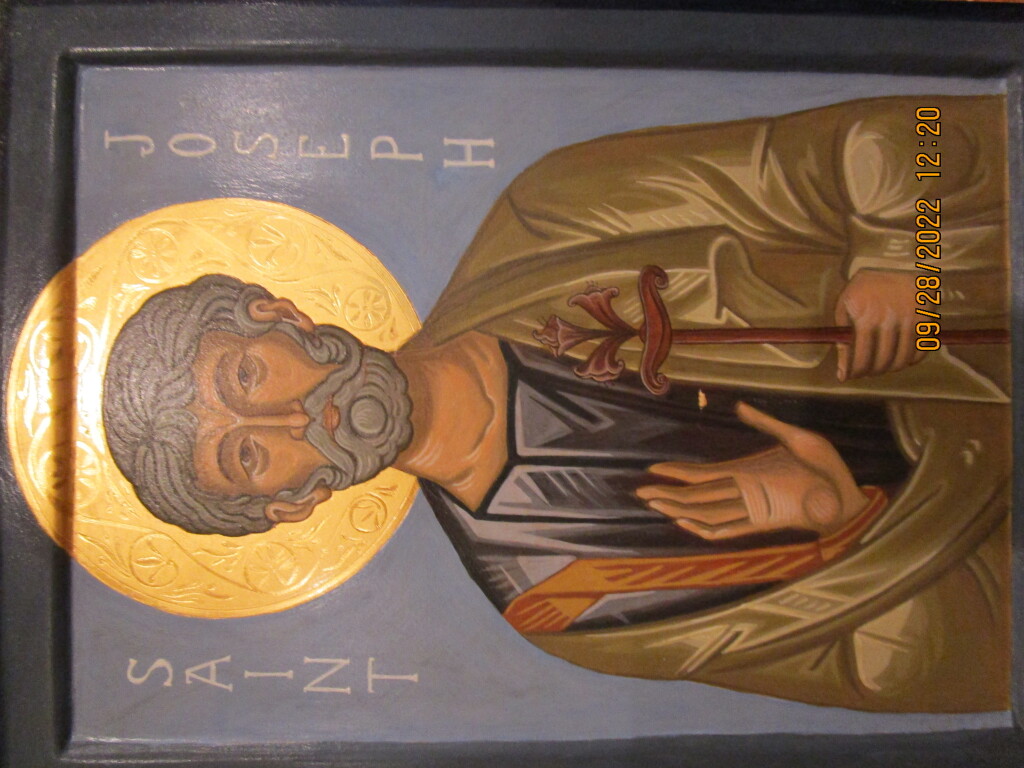
The St. Joseph Angelus
Leader The angel of the Lord said, “Joseph, son of David, do not be afraid to take Mary your wife into your home…
All … for it is through the Holy Spirit that this child has been conceived in her.” Blessed Saint Joseph, husband of Mary, come to my aid, especially in times of anguish and difficulty.
Leader “She will bear a son and you are to name him Jesus…
All …because he will save his people from their sins.” Blessed Saint Joseph, husband of Mary, come to my aid, especially in times of anguish and difficulty.
Leader “Behold, the virgin shall be with child and bear a son…
All … and they shall name him Emmanuel, which means ‘God with us.’” Blessed Saint Joseph, husband of Mary, come to my aid, especially in times of anguish and difficulty.
(Conclude with Grace if prayed before a meal or with the following:)
Leader: Let us pray. All: Pour forth, we beseech you, O Lord, your grace into our hearts; that we to whom the Incarnation of Christ, your Son, was made known by the message of an angel, may by his Passion and Cross be brought to the glory of his Resurrection through the same Christ our Lord. Amen.
Lenten 2023 Goal: Doing jigsaw puzzles…really!
By Robert Fontana
Lent challenges me to do what Jesus advised: take the “beam” from my eye before I try taking a “splinter” from someone else’s eye. (Matthew 7:3-5) And this Lent, I’ve decided that jigsaw puzzles are going to help me (and us) do that.
You might ask, “Just how is doing a jigsaw puzzle helping me take “the beam out of my eye?” First, working on a jigsaw puzzle demands paying attention to details (not an easy thing for me). It’s a quieting exercise that requires slowing down and searching for shapes and colors that connect. There is also a beautiful intimacy to it. Lori and I sit next to each other. We help one another out, cheer each other on, and commiserate together when it seems impossible. And then, we continue on, searching for shapes, contours, colors, and little images or markings that will help connect one piece to another.

The slow work of doing a jigsaw puzzle resembles the slow work of taking a “beam” out of my eye. It begins with paying attention to me, to what happens to me while I interact with life, especially with people. I notice my reactions, try to step away from judging others, and examine my responses, emotionally, mentally, and spiritually.
I remember the first time that this happened to me in a big way. Right out of high school, I was doing volunteer work at a Catholic parish on a Navajo Indian Reservation. I had never been west of Dallas, Texas, never knowingly talked with Native people, and was pretty full of myself as a devout Catholic, ready to share the Catholic faith. I was taught, and believed, that Catholicism was the one true Church; and I was ready to tell others about it.
Arriving at the parish, I discovered that we Catholics were only one of many Christian churches competing “to help” the Navajo people. I saw an Olympic-type competition among the many denominations to draw the Navajo children to THEIR vacation Bible school. Driving our van to pick up children, I was on high alert dodging the other church vans doing the same thing. Pentecostals, Lutherans, Presbyterians, Jehovah Witnesses, Mormons, and other non-denominational groups. Though I did not quite know what it meant or how to articulate it, it felt a bit obscene to me. I did not see that I had a “beam” in my eye that needed to be taken out.
Our parish volunteer ministry team decided to do door-to-door evangelization. We practiced how to give our 4-minute evangelization spiel and set out. At one adobe home, before I could begin my spiel, a Navajo woman held up her hand and said, “Stop! Why don’t you listen to me before you open your mouth.” She followed with, “We’ve been do-good to death.”
I don’t remember the rest of our conversation clearly, but I do remember being shaken by her words. It was the beginning of my coming to realize that I had a “beam in my eye” that needed removing. But the work was slow. First, like the jigsaw puzzle, I began connecting the shapes – all the Christian churches competing for the Native children’s participation, including we Catholics – we were all “do-gooders.” The words “do-gooder” did not feel good. What did it mean? At the time, I pondered, but did not ask someone older and wiser than I.

It was not until much later that the Navajo woman’s words, “We’ve been do-good to death,” and “Why don’t you listen to me before you open your mouth?” began to really bother me. I hadn’t really listened to her. I had so much to say. Sadly, I started doing youth ministry a few years later with the same “do-gooder” beam in my eye. I had so much to say to young people and gave the most god-awful retreats. The saving grace was that we had fun, ate well, and there were good, caring people working with me. But again, I talked at the young people and did not listen to them because I had a “beam in my eye” and did not know it.
Fast forward to graduate school, youth ministry training and learning a Catholic theology of grace: that all of creation, though wounded by sin, is imbued with the presence of God. God is fully active in the lives of every human being, regardless of race, creed, or color. If this is true, then every person deserves to be respected and heard. And, if this is true, then the method of evangelization cannot be a “monologue” which is what I was doing with the Navajo woman and my first youth group. We needed a dialogue that began with my listening to them, learning their stories, and building trust and friendship before I shared my story.
Finally, after years of looking at the shapes, colors, and contours of my encounter with that Navajo woman, I was able to name the “beam in my eye” and remove it by learning to listen to others whose world views and experiences were completely different from mine. This has been the story of my spiritual journey since, taking the beam out of my eye, as I learned to…
~ be a humble Catholic Christian;
~ be a healthy spouse to Lori and loving father to our children;
~ work with women in ministry;
~ struggle with being raised on the white side of segregation and flying a Confederate flag;
~ listen to and honor the stories of my gay family members and friends;
~ willingly encounter believers from Islam, Judaism, Buddhism, and Native American religious faiths;
¨ and…you get the message.
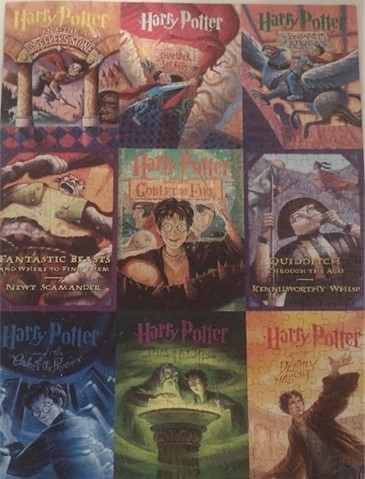
During Lent I am working on a jigsaw puzzle to help me slow down and pay attention to the jigsaw puzzle of my life. What beam needs to be removed from my eye this Lent? I’m not sure, but I’m expecting the Holy Spirit to show me one piece, one shape, one color at a time.
Tupperware Lids and Why I Need Lent
By Lori Fontana

What a problem! I find the perfect container for the leftover soup, pour the soup in, and then… no lid that fits. YIKES! So I start my search again. It’s annoying.
Periodically, I lay out all our food containers, pull out all the lids, and match them up. Then I toss any container or lid that doesn’t have its corresponding part. But things never seem to stay matched for long.
On Ash Wednesday, I was whining, “Where is a lid that fits this?” as I tried to snap on several “similar” but wrong lids. I caught myself – what am I complaining about? Do I really think THIS is a problem?
Our world is experiencing so much suffering, near and far: the brutal war in Ukraine; the terrible devastation from the earthquakes in Syria and Turkey; hunger, disease, and drought in so many places – Yemen, Afghanistan, North Korea, Nicaragua, Haiti. Closer to home, in Seatac, a mom with three children struggles to feed them and scrounges for diapers for her baby. Wouldn’t she just laugh (or scoff) at my so-called problem – a container missing its lid!
The ancient Ash Wednesday prayer, prayed as my forehead is marked with the cross of ashes, calls me up short: “Remember, woman / man, that you are dust, and unto dust you shall return.” What’s a missing Tupperware lid in light of this prayer?
This is why I need Lent. I need Lent’s invitation to pause, to reflect on my own life, and to, symbolically at least, go into the desert with Jesus, where there is time for quiet prayer to listen to the wisdom of the Holy Spirit. Lent is a time to see more clearly some basic truths: my mortality and the gift of my faith.
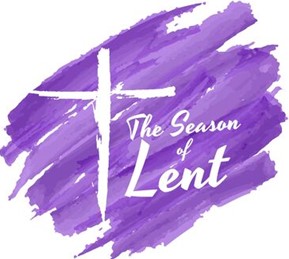
Lent calls me to lift my eyes from life’s small irritations and really look around to see the afflictions of so many. But once I see, how do I respond? With reflection, two things are clear to me. First, my problems are so very small; and second, I don’t have the power, nor is it even my job, to relieve all the world’s misery.
In regard to the truth of small problems, I know that, yes, I can whine less! But I still need a lid that fits…How, then, do we followers of Jesus deal with our everyday annoyances? Is it okay to complain sometimes? Frustration is a normal human response. The challenge for Christians is to move through the complaints and self-pity.
Lent is a reminder that, though we will be impatient or tired, misunderstood or inconvenienced, mad, sad or scared, we can’t wallow for long in these feelings. Why should a missing Tupperware lid rob me of peace! Spiraling into the mire of “poor me” is not what Jesus asks of us as people of faith. Jesus promises us, “Peace I leave with you; my peace do I give to you. Not as the world gives do I give it to you. Do not let your hearts be troubled or afraid.” (John 14:27)
One simple and sure way to pull out of the mire of self-pity is a grateful heart. Another is to “offer it up,” as so many of us were taught by our mothers or fathers or Catholic school teachers. Both gratitude and “offering up” work a conversion in me. I can turn my thoughts outward toward the deep suffering of so many people. Spiritual writers exhort us to pray, joining our suffering, great or small, to the suffering of Jesus, who embraces the suffering of all.
As to how one addresses the suffering around the world: no one person can relieve the world’s suffering. What can I do? I firmly believe each of us can be good, do good, be a power for good in the circumstances of our daily lives. Some are called to far-away mission work; most of us are not. But each of us lives in “mission territory,” where people are suffering, where the love and hope and JOY of the Trinity are sorely needed. We can be messengers of Jesus’s love, hope, compassion, JOY. After all, as St Teresa of Avila says, we are the hands and feet, heart and voice of Christ now on earth. Every little act of kindness furthers the reign of God.
What does this look like? For me, it’s showing patience in the doctor’s office or waiting in the phone queue. It’s a smile and hello to someone in need on the street. It’s asking the grocery clerk how her day is going, and really listening to her answer. I’ve had quite the conversations while buying milk and eggs! It’s compassion and kindness to those closest to us, in our homes, our work places, our neighborhoods. And a belief that is really opening up my heart to be more loving is that most people are doing the best that they can.
The Scriptures of Holy Week lead us through Jesus’s passion and death. What great love Jesus shows for us in both his life and his death. There is no greater love, and Jesus gives his love to us freely and completely. In the end, love is what matters most. I pray our hearts will overflow with gratitude for this gift of Lent, which helps us grow in our love for Jesus and one another.
Now if I can just find that darn lid…
Imagine being married to yourself!
By Robert Fontana
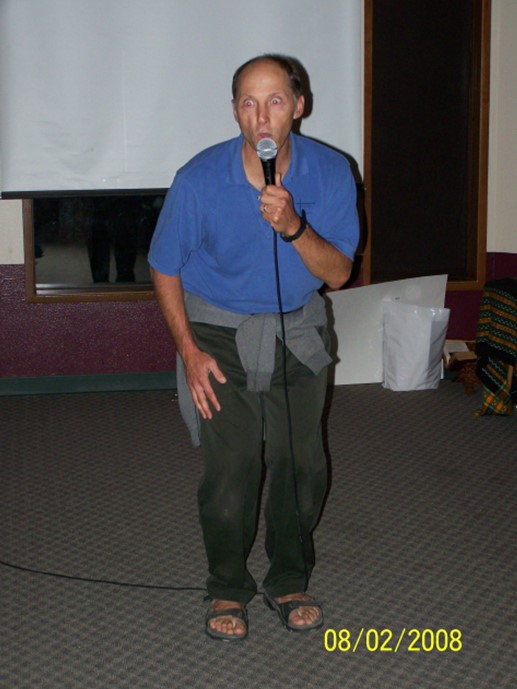
I know! It sounds like a nightmare! However, after being married for 45 years this August, and having now worked for many years as a therapist for couples, married and co-habiting, it is my experience that most spouses and partners would, at one time or another, say they would prefer to be married/partnered to oneself. This actually happened to Lori and me.
We were going through some conflict, nothing major mind you. I was working hard to be a good listener. It was a little challenging since I was standing outside in the howling winds of a snowstorm, the door double-locked, and Lori talking to me from the other side. Those details are unimportant. What’s important is that we were eventually able to sit down and talk. We each wrote down what we needed from the other.
Lori’s list was (and I am not making this up):
Þ When you say you’ll be home at 10 pm, Mr. Youth Minister, you’re home at 10 pm.
Þ When you come home at 10 pm, you do not wake the small children to play with them.
Þ If there are mounds of diapers to be folded and dishes to be washed, there is NO ROMANCE!
Þ If you write a check, record a check.
Þ If you record a check, record it correctly.
Þ If you balance the checkbook…JUST DON’T!!
My list was much shorter:
Þ Don’t sweat the small stuff. (Remember the book of the same name?)
Þ Let’s be flexible.
Þ Let’s play more.
Þ The dishes and diapers can wait…
We each read our list to the other and then started to laugh. Basically, Lori was saying she would prefer to be married to her, and I was saying that I would prefer being married to me. At that point, I heard a voice in my head, and I’m sure it was the Holy Spirit, say: “Now real love can happen in this marriage.” We knew right away what the voice meant. We really needed to accept each other as the other is. And if our needs are not being met, we had to learn how to communicate this to one another and negotiate to get to some common ground so that the marriage would always win. We had to stop the tug-of-war of “I’m not you, and you’re not me,” of pulling against one another; and we needed to do the hard work of pulling together by finding unity in all things.
John Gottman, a University of Washington researcher on love and marriage, wrote in his book, The Seven Principles for Making Marriage Work, that 69% of the conflicts between couples have nothing to do with “right or wrong.” They have everything to do with “I’m not you, and you are not me.” Couples who never learn this truth, remain in a tug-of-war, pulling against each other, until divorce or “death-do-they-part.” They convince themselves that their issues are really about “right or wrong;” but in truth, it’s mostly about “this is what I want, how I like it, how I was raised.”
This tug-of-war marriage leaves one or both spouses feeling hurt, dismissed, and unloved. I have clients who are devout Christians, who have been married for 25, 30, or 40 years, and yet they are miserable in marriage. If their faith helps them at all, it is only to bear the cross of the other; it doesn’t seem to help them find unity, love, and friendship. Rather than learning to accommodate their differences and work for unity, these couples create a negative pattern or “dance” of interaction that they step into anytime they have a disagreement or conflict. Their negative dance reinforces the hurt, distance, and disconnection.
Successful couples learn that this tug-of-war must end. They learn through conflict that they are bumping into their differences. What is needed is effective listening to understand the other, and empathy to validate one another’s emotions. Healthy couples learn to say to one another, “I won’t let you win at my expense, and I won’t try to win at your expense. We are going to find common ground so that the marriage wins.”
Through different issues that have surfaced in our marriage, Lori and I have learned to desire unity over what each of us may prefer. This ranges from simple issues like how we are going to spend our evenings to complex issues like navigating a difficult topic within the family. We are motivated to find unity with whatever the current issue is because tomorrow there will be another issue…and the next day another one. Working for unity day-in and day-out creates a positive pattern or “dance” that reinforces love, friendship, emotional safety, and belonging. After almost 45 years of marriage, we go to bed at night with a profound sense of peace. We don’t have a perfect marriage, but we do have a successful one. Are there times when we don’t quite find unity on an issue, when we misunderstand one another and have hurt one another? Absolutely! But because of the positive dance we have created in our relationship, we are quick to repair, talk things through, learn from our mistakes, and forgive one another.
Unity does not mean uniformity. After all these years, we are still night and day different from one another. On our day off, Lori would prefer to begin it with a cup of coffee, time for prayer followed by time to work the crossword puzzle in the paper. I prefer to begin my day, after coffee, with a long quiet walk in the park. So we compromise, with coffee and prayer together, then her crossword puzzle, my walk. Seeking unity in all things means we strive for agreement on an issue. It also means that one or both of us might say, “I don’t like this decision, but I can live with it without resentment.” And the positive dance goes on!
I would hate to be married to me. Being married to Lori is way better!
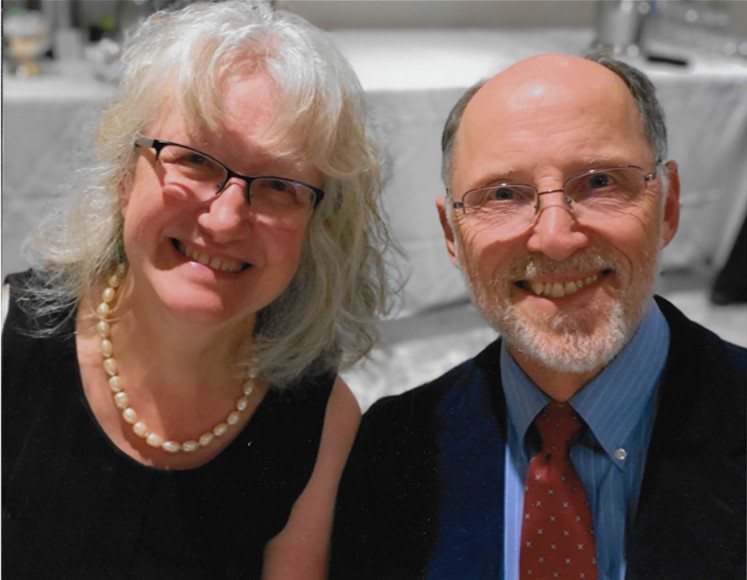
Care for the Earth Poetry and Essay Contest for Youth, Kinder through High School

Lori and I are helping our parish (Assumption Parish, Seattle) celebrate “Present Your Child to God Sunday” on February 19 (changed from Feb 5). We are going to have a grand procession with children ringing bells and waving streamers, and a trumpet player leading the pack playing “O When The Saints Go Marching In.” It ought to be fun.
In addition, we are trying to involve the youth and children in a meaningful way through an essay / poetry contest at the parish. The topic we have chosen is a real life issue, close to the heart of Pope Francis, “Care for the Earth.”
Our children are the Church of today (and not merely of the future). We can start treating them as such by asking them to think about and act on real issues that are critical to human survival like climate change and care for God’s creation.
CLM is hosting a separate poetry/essay contest for our readers and sponsors who do not attend Assumption. We invite you to ask your children or grandchildren to participate in the essay/poetry contest (CLM entries will be judged separately.) Begin by showing them a short (4-minute) video made for children, about Laudato Si, Pope Francis’ encyclical letter.
Go to https://www.youtube.com/watch?v=KOgF2Kgel6k Then children can submit a poem or a 100-word essay on “what it means for you to ‘care for the earth’ during this time of climate crisis.
I showed this video to my grandchildren. Following it, they immediately set to work on writing something:
This is what 3rd-grader Cora wrote: Save the Earth – The earth is a beautiful place full of life but humans are taking more than they need. All things need earth and they matter just much as you. You can help the earth. You can bring back the beauty. You can make a difference. You are special. So, bring back the lush green forest. Bring back the sparkling waters and peaceful animals. Bring back earth. Plant a garden. Feed the birds.
And 1st-grader, Rose: The Earth – Trees, flowers. All things are beautiful. Everyone matters. You matter. We have light in the darkness. We can make the earth better.
3rd-grader, Linus wrote a haiku: Caring for the Earth – Be kind to the earth. Just do it! Do it! Do it! Give back to the earth.
Your youth and/or children can win prizes (they won’t be competing with the Fontana grands).
First place: $25 Second Place: $15 Third place: $10
So please sit down with them, show them the video, and encourage them to write a poem or essay on “Care for the Earth.” Scan and email the essay or poem – one entry per person – to robert@catholiclifeministries.org. Or mail it to us: 1827 NE 58th St, #B Seattle WA 98105. Due by Saturday, Feb 18th. We will select winners for the following age groups:
High School (9th – 12th grade); Middle School (6th – 8th grade); Primary School (Kinder – 5th grade). Please be sure to write the author’s name, grade level, and phone or email on the entry.
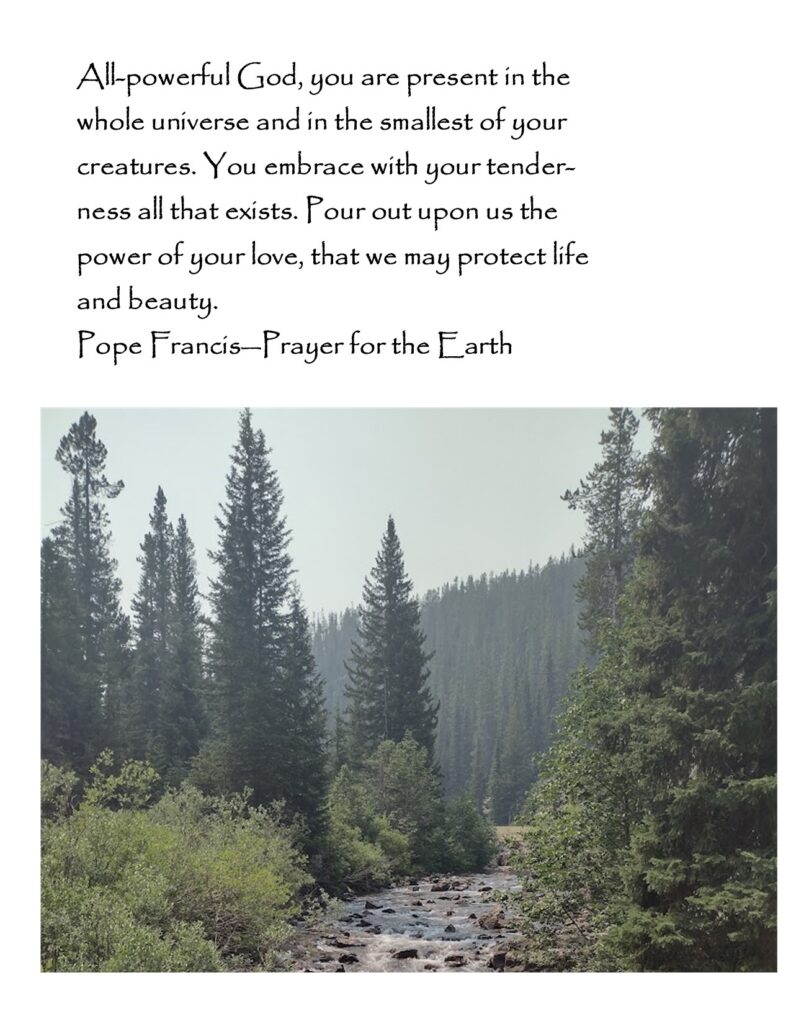
St. Brigid’s Day (Feb 1), Ash Wednesday, and Other Non-Essentials of the Christian Life
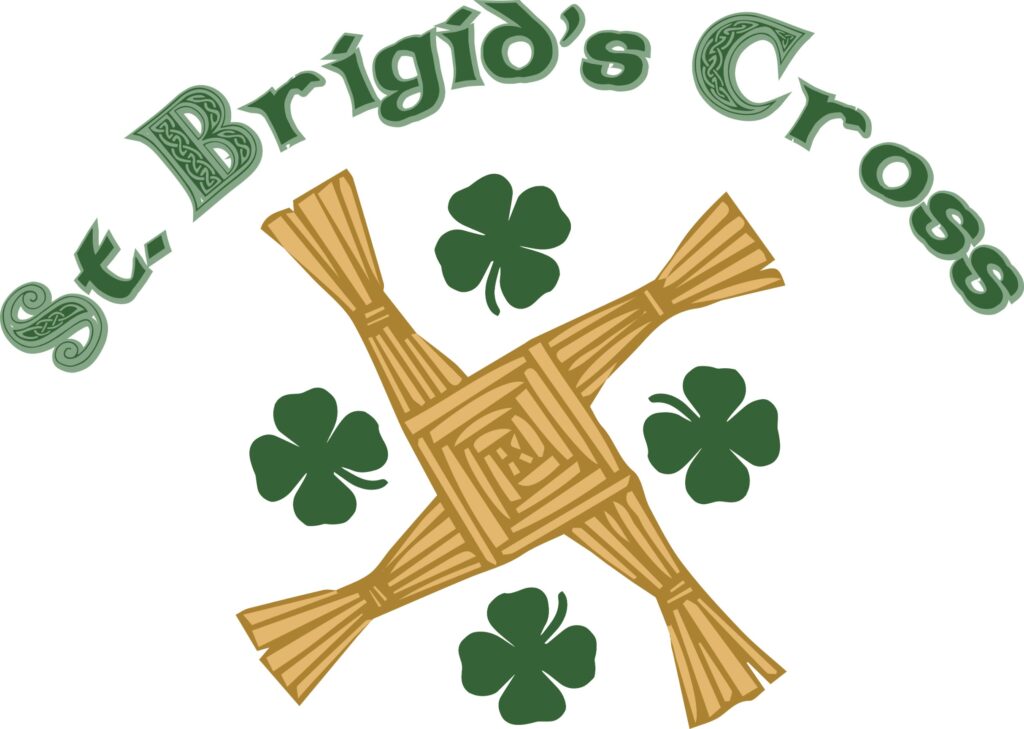
A person could go all his or her life without observing Ash Wednesday and still be a deeply committed Christian. Obviously the same is true for St. Brigid’s Day. These celebrations include some tangible expression of faith. On Ash Wednesday we receive a cross of ashes on our foreheads. On the eve of St. Brigid’s Day (February 1), we use a kerchief to literally swipe our homes clean of sin with the cloth and then tie the cloth to a tree, where “Spirit-wind” blows the sins away. These actions add meaning and even fun to our faith, and help make our faith very real and earthy. They are outward signs of our beliefs as disciples of Jesus, yet they are not essential to discipleship.
What are the essentials of being a disciple of Jesus anyway? Here are a few that come to mind: belonging to a community of faith that follows Jesus; encountering Jesus in a personal way and making a conscious decision to follow him by living out the Beatitudes; opening one’s life to the Holy Spirit; belonging to a small group where one is personally loved and held accountable as a disciple; participation in public worship and community rites; maintaining a consistent prayer life that involves the praying with/studying of Scripture; engaging one’s faith within daily life; caring for the sick, elderly, poor, and for children.

WOW! That’s a tall order and sounds like a lot of work. These “essentials” are the “meat and potatoes” of following Jesus but, to continue the food analogy, without much seasoning or dessert.
I think that it’s the addition of the non-essentials that adds spice and fun to one’s faith, and shapes a specific identity as Christians (Catholic, Episcopalian, etc.). For example, the liturgical year that divides up secular time into sacred seasons of Advent/Christmas, Lent, Easter/Pentecost, and Ordinary Times, is certainly not an essential feature of being a Christian. Some deeply Christian denominations function perfectly fine without a “liturgical year.” Yet we Catholics, joined by the Orthodox and mainline Protestants, find the liturgical calendar extremely useful to organize the year around the major themes of Jesus’ life, death, and resurrection. In doing so, we think we are better able to fully participate in that paschal mystery year round.
We wait with patience during Advent as we pray for the coming Messiah; rejoice exceedingly as we celebrate the coming of the Messiah in the baby Jesus during Christmas/Epiphany; sit at the feet of Jesus during Ordinary Time to learn about the Kingdom of God; mourn with Jesus for our sins and the sins of the world as we walk with him to Calvary; and shout “Alleluia” as we experience his resurrection and the gift of the Holy Spirit. The liturgical year is a non-essential aspect of Christian discipleship that infuses our faith with the breadth of human emotions. It adds immense depth to Christian discipleship and provides us with an anchor to hang on to our faith amidst the busyness of secular society.
The “Sign of the Cross” is another non-essential and arbitrary practice that Christians do that has helped shape an identity that is deeply Christian and Catholic. In that one action, we remind ourselves of the saving work of Jesus through his death on the cross, and of our dependence on the Trinity, Father, Son, and Holy Spirit. Can a person be a good Christian and never make the “sign of the cross”? Most certainly. Some Christians bow their heads when they begin a prayer. Catholics (and Orthodox) make the “Sign of the Cross.” It reminds us to quiet ourselves and be attentive to what God is doing in the moment, whether it is followed by the blessing of a meal or the committal of a beloved family member to the grave.
I think a relationship with Mary, the mother of Jesus, especially manifested through the practice of praying the rosary and the veneration of her image in ICONS, is a non-essential practice of Christian discipleship. One could go his or her entire life without ever praying to God through Mary, much less saying the rosary, and still be a deeply committed follower of Jesus. St. Paul makes no mention of Jesus’ mother except in one obscure text in Galatians (4:4). Certainly Paul never prayed to Mary and never thought that what she brought to the life of a disciple was important enough to write about. Protestants, taking their cue from Paul, also do not pray to Mary (or the saints) and yet are still following Jesus as committed disciples. Mary, ICONS, and the rosary are non-essentials to Christian discipleship. Yet Christians have prayed to God through Mary since the early days of Christianity. Devotion to Mary, so deeply imbedded in Catholic and Orthodox cultures, is a wonderful gift from God that deepens faith, hope, and love.
Of course, there are many other non-essentials such as observing the feast days of saints, praying to St. Anthony for lost items, blessing pets on the feast of St. Francis, wearing religious medals and scapulars, lighting candles as a prayer offering, fasting on Wednesdays and Fridays, and “burying the Alleluia” on Mardi Gras, the Tuesday before Ash Wednesday. None of these practices are essential to Christian discipleship and, if done without the essentials, don’t have much meaning. But when these rituals are done in conjunction with being an active follower of Jesus, they have the capacity to shape a Catholic Christian identity that gives a person deeper roots and brings joy and fun to the Christian life.
So add some spice to your faith life. On St. Brigid’s Day (Feb. 1), wipe your home clean of sin and on Mardi Gras (Feb. 21)) bury the Alleluia (see rituals below). Then on Ash Wednesday, the very next day, go to the nearest Catholic Church and get your ashes (even if you are not a Catholic).
_______________________________________
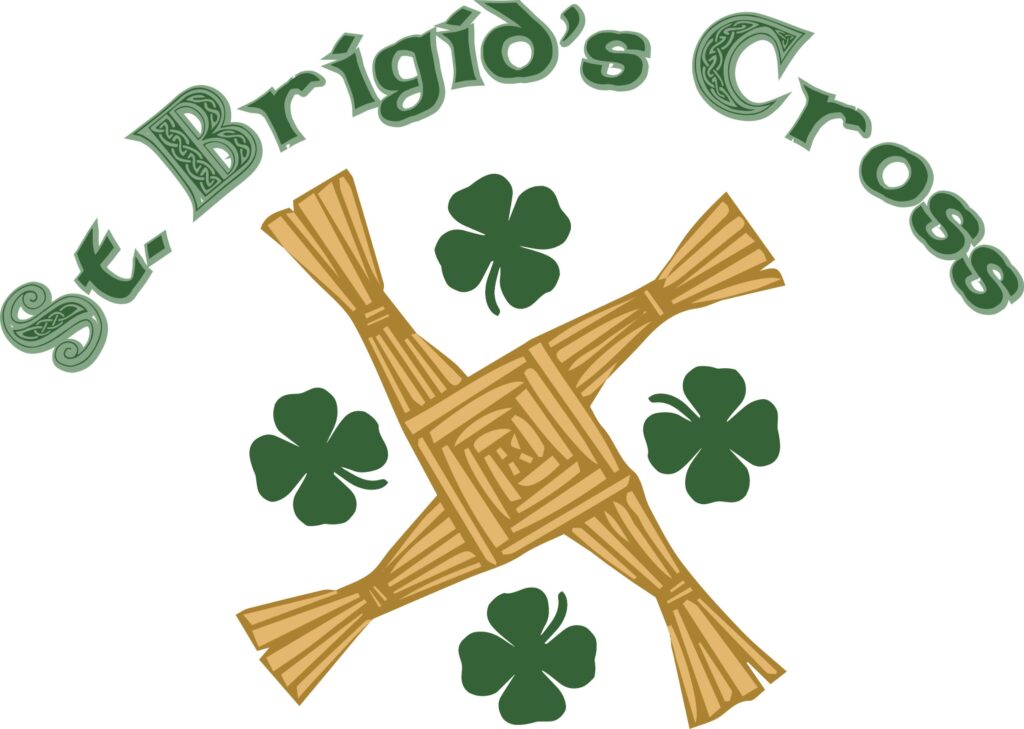
For the Eve of St. Brigid’s Day “Spring Cleaning” (January 31)
Prayer: Saint Brigid, daughter of Ireland and lover of Jesus, draw us by your prayers into the living flame of God’s love. Help us to clean our hearts and homes of all that is selfish and self-centered. We forgive all who have hurt us and ask God to forgive our sins as well.
Pray for us, St. Brigid, that we will be attentive to the poor and spiritually abandoned, that we will practice the Beatitudes in good times and bad, and that the warmth of God’s love will animate all that we say and do.
Activity: Each member of the home takes a kerchief or handkerchief in hand and walks through the house dusting the furniture and books, lamps, etc. singing “Alleluia, alleluia, alleluia.”
When the house has been thoroughly dusted, all go outside and tie the kerchiefs on the branches of a tree. The myth is that, on the eve of her feast day, in the grace of God and the power of the Holy Spirit, St. Brigid travels through the land with her prayers to remove the dust and sin, and even ailments, from our lives.
Closing Prayer: St. Brigid, come this day, to our home and hearts, come by the power of God, and be our guest. And help us, dear Brigid, to wipe away the dust of “me, my, and mine” that we might love others as disciples of Jesus with a selfless heart. Amen.
Our Father…
Leave the kerchiefs and handkerchiefs on the tree for a week or until Ash Wednesday.
BURY THE ALLELUIA ON ASH WEDNESDAY (Feb 22) or on the Eve of Ash Wednesday (Mardi Gras)
All Alleluia! Alleluia! Alleluia!
Leader For the 40 days of Lent, the Church “buries the Alleluia” by refraining from singing this sacred word in our liturgy. We do so to remember the Lord Jesus, God’s alleluia, the Lamb of God, who took the sins of the world with him to the grave so as to rob them of their power to destroy life.
What are the sins of the world today that destroy life? Say them aloud as you write them on a sheet of paper bearing the word “Alleluia.”
[After all have written the “sins of the world” on the sheet, the “Alleluia” is placed in the ground and buried with dirt in the same way that Jesus who died for the sins of the world was buried in a tomb following his death.]
All Gracious God and Father, your beloved Son Jesus suffered death to give us life. Help us during this Lenten season to deny ourselves and serve others in imitation of Him who lives with you, and the Holy Spirit, one God forever and ever. Amen!
Homespun Homily: On Holy, Vulnerable Ground
By Lori Fontana
How many of you, dear readers, have cared for a loved one who is very ill? I am in the midst of caring for a family member who has suffered a debilitating illness, and it has given me much time to ponder and pray. Seeing her so debilitated is heartbreaking, but it is also breaking my heart open to many truths that I believe God wants to teach me.
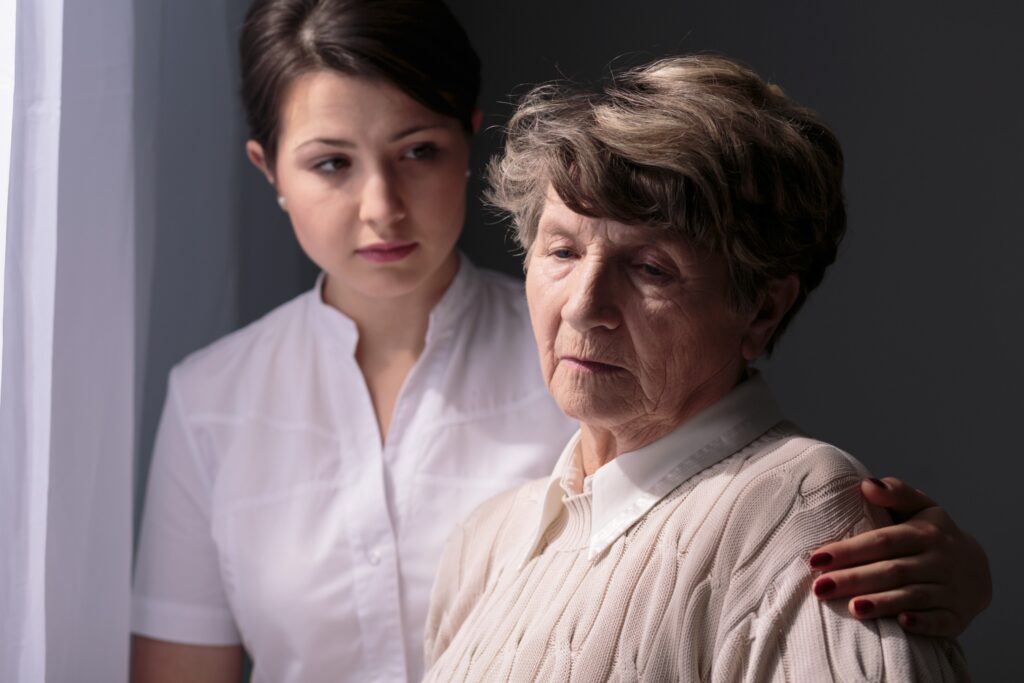
My journey to care for my loved one was long and winding, both figuratively and literally. Literally, I had to work feverishly to “clear my calendar” to make the time and space to come. Though I only work part-time (for Robert! – I’m chief cook and bottle-washer, or rather, bookkeeper, event planner, and of course, sometime writer!), most of my work cannot be done remotely. So there was a long “to-do” list to complete before I traveled.
The trip itself was long – across the country; and while I am always amazed at the speed of air travel, gosh those airplane seats are smaller and smaller, and even on a flight of 3,000 miles, all you get for sustenance is a bag of pretzels and some cold water or hot coffee. And don’t get me started on the airplane restrooms…aghhh!
The figurative journey was an interior one – mental and emotional. Before coming, I worried and fretted: would I be physically strong enough to give the needed help? How would we pass the time – the many hours over many days of just being present to each other? Would we be relaxed and comfortable, or tense and uncertain? Would the family like my cooking?
Thankfully, I pushed through the hesitancy and doubt…and here I am. And what a tremendous grace it has been.
On my first day here, I was helping to give my loved one a sponge bath. I’ve given thousands of baths to my babies and toddlers but never to someone near my own age. I was overcome with such a feeling of tenderness and a sense of the holiness of the moment – ministering to someone who is so in need of help and vulnerable. I am aware of my role as caregiver, yes, but in a flash of clarity, I understood that I, too, share in her very same vulnerability and fragility, because I am human. None of us is beyond the reach of illness or accident or aging; and we are all going to die.
Coming face-to-face with this basic truth, I know I have several choices. I can run – to activities, media, fun; I can hide – behind clothes, possessions, obsessive exercise; I can deny – with food, drink, drugs, unhealthy relationships. Or I can embrace the end to which all of us are heading.
It’s just a fact that when we are certain about where we are going, we are better travelers. We move forward with intention, with gusto and JOY, because in the light of eternity, we can see more clearly what really matters. Oh, we can count on making detours. Sometimes we will circle back or veer into dead ends, even with our clearer vision. But we will stay on course to our eternal home, following God’s beckoning, God who is pure love and who loves us completely, totally, without reservation.
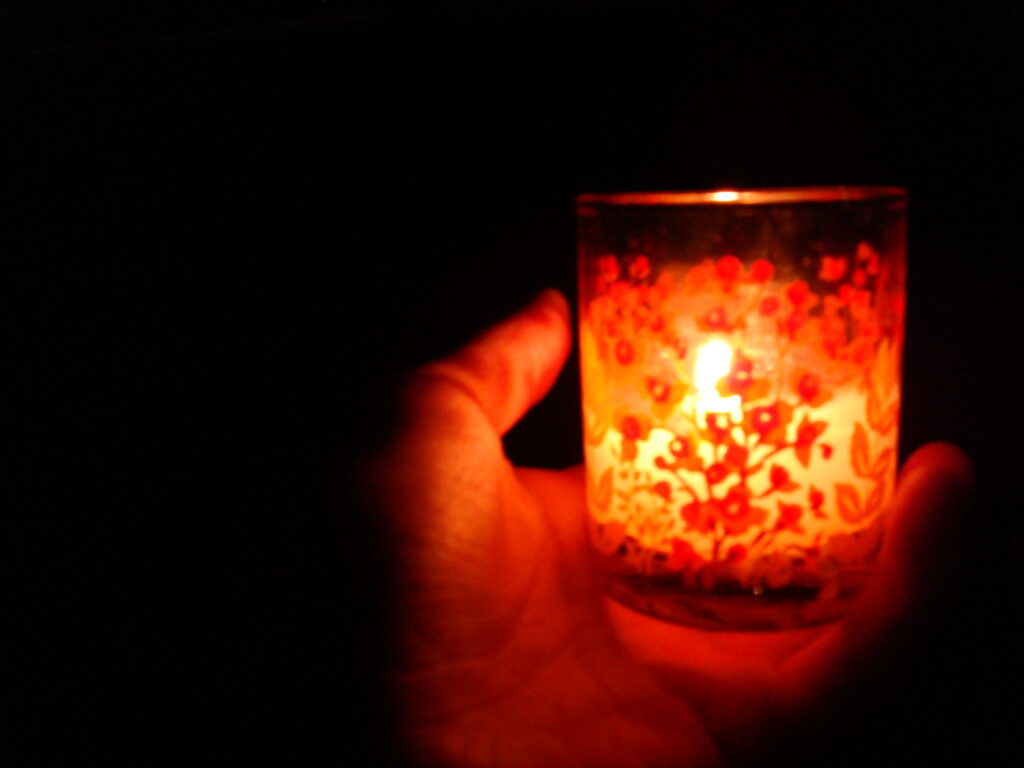
Yes, God loves us, but that doesn’t mean we won’t suffer, which points me back to the grace of caring for my loved one. Overnight, much of who she is had seemed to vanish. She can walk only with help; she cannot cook, drive, or write. Individual words are clearly spoken, but her thoughts are often jumbled, especially with the mixing up of “I,” “you,” “she,” “me,” etc. The mystery is that, no matter her physical, mental, emotional state, truly, she is beloved of God. As the Lord tells us in Isaiah 43:4, ”You are precious in my eyes, and glorious [honored], and I love you.” No one is excluded from God’s love.
As I tend to my loved one’s needs, I am so aware that I stand on holy ground and am called to a holy mission. As John Michael Talbot sings, “Christ has no body now but yours, no hands, no feet on earth but yours. Yours are the eyes through which he moves compassion on this world; Christ has no body now on earth but yours.” [from St Teresa of Avila]
I’ve never had this role before. Helping to feed, dress, toilet, and bathe another adult is a very intimate, and sometimes very intimidating, job. But with the eyes of faith, it becomes a sacred duty, an honored task, and an act of love. In this hard and holy work, the Holy Spirit is revealing to me my smallness, my weakness, and also my greatness. I, human, am diminishing each day; but also I, human, am Jesus to another. This is holy ground, indeed!
I’m left with two things to ponder. First, I will be leaving. I will travel to an airport, get on an airplane, and fly across the country, returning to my own daily routine, my own bed. I’m basically in control of my life. I leave these hardships behind, but my loved one remains here, struggling each day to do the most basic life activities such as brushing her teeth. How often do I brush my teeth mindlessly, while doing two or three other things?!
Second, I’m reflecting on the many, many people who cope with a loved one’s debilitating illness every day, for long weeks and months, even years. It can happen in any of our families or circle of close friends. And, taking it a step further, the one with the debilitating accident or illness could be me.
It’s only in faith that I can stave off the anxieties and fears that accompany thoughts of these possibilities. Jesus is our hope; he knows firsthand our human journey, has endured many trials and sufferings, and promises to be with us “in good times and in bad.” And he also gives us the Holy Spirit to strengthen and guide us. That is the power of our faith – not that we avoid all troubles, but that we are given the power and the wisdom to endure them.

